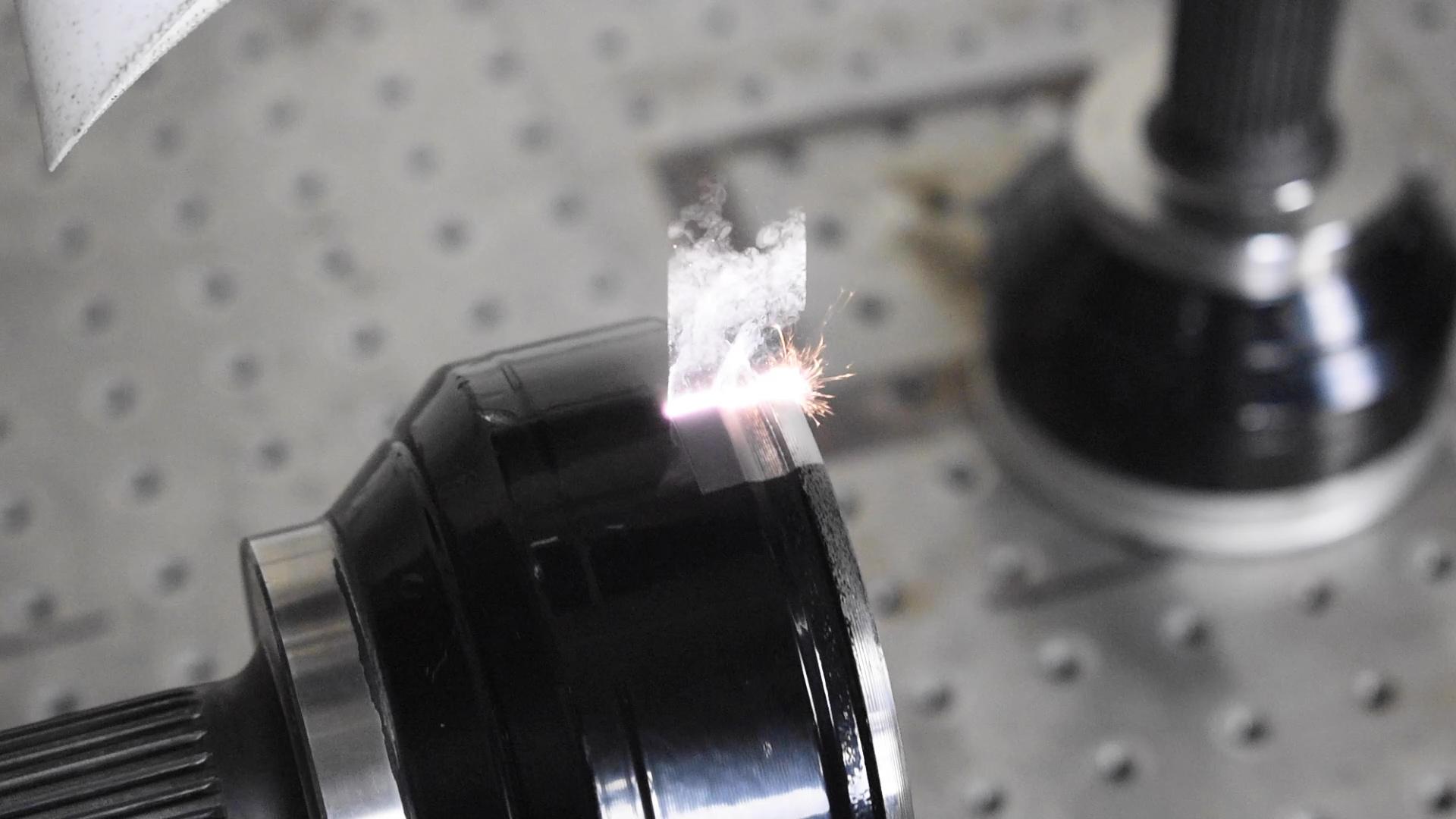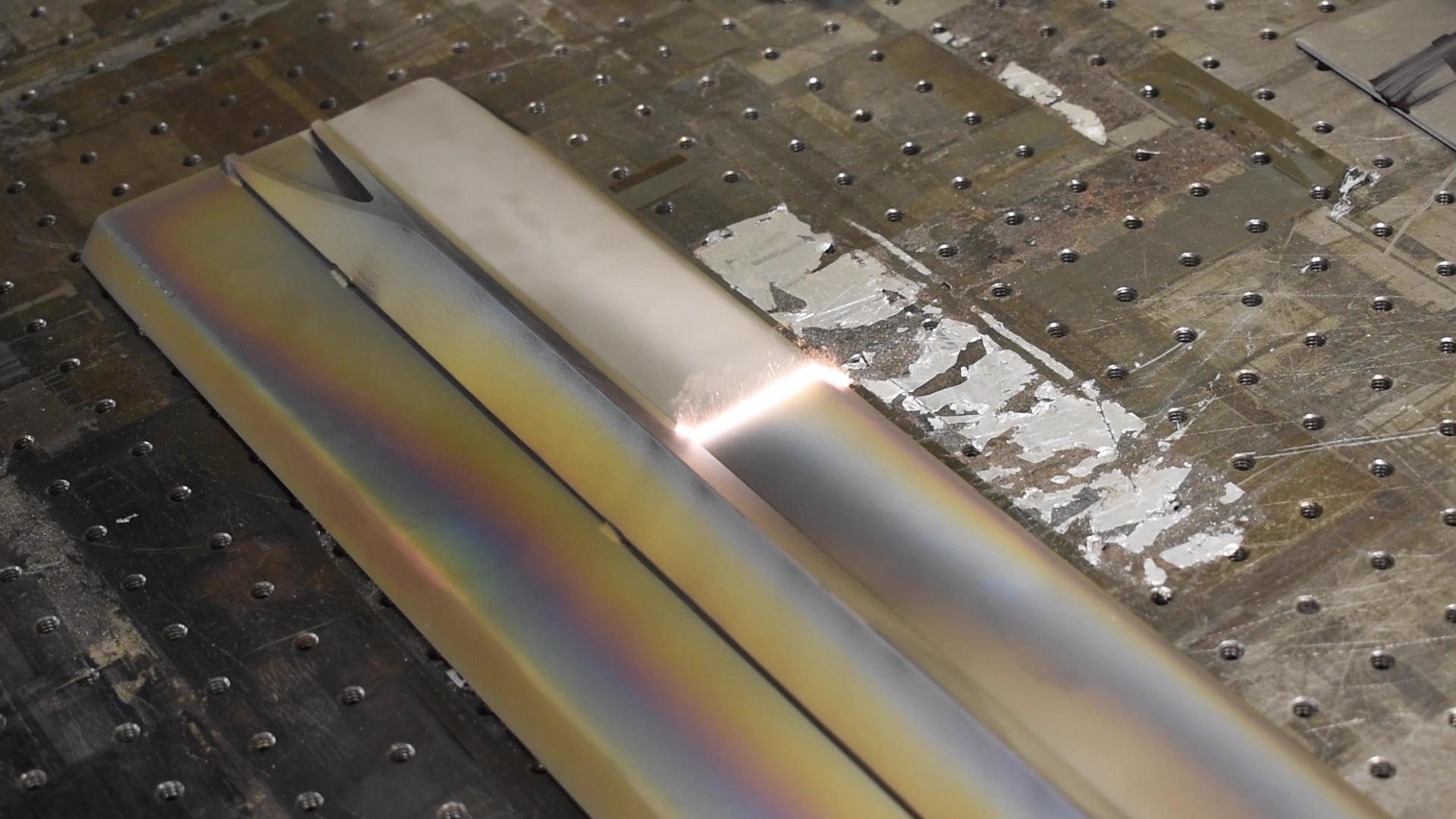U.S. Navy MRO Center Tests Laser Cleaning Tech for Aircraft Components

The U.S. Navy’s Fleet Readiness Center East (FRCE), which provides MRO and technical services for Navy and Marine Corps aviation, is pursuing investment in laser ablation technology to make cleaning of aircraft components safer and more efficient.
During a recent demonstration by laser solutions provider Adapt Laser, FRCE successfully tested laser cleaning technology on aircraft support components to safely remove corrosion and other hazardous coatings. Representatives from the company used a handheld laser to strip paint from a large aircraft engine can, aircraft components and test-panels with various coating systems.
The technology works by using thousands of laser pulses per second to remove contaminants, corrosion and hazardous coatings. According to Adapt Laser, laser ablation technology has a number of benefits compared to typical plastic blasting and mechanical removal methods, which require extensive personal protective equipment due to dangers of operation and result in hazardous waste that can be expensive to dispose of.
“Unlike other abrasive cleaning methods, laser ablation doesn’t impact the integrity of the substrate or create hazardous mixed waste,” says Timothy Niemeier, vice president, Adapt Laser. “Coatings and contaminants removed by our laser ablation process are safely captured by filters and easily disposed of. This makes it a more cost-effective and safer cleaning solution compared to traditional methods.”

Chad Richards, an aircraft examiner at FRCE present for the demonstration, also noted that the technology is significantly quieter than abrasive blasting methods. “Right now, you can’t be understood when you’re blasting,” he said. “With laser ablation, you can have someone right beside you talking.”
FRCE’s Advanced Technology and Innovation Team and Materials Engineering Division are striving to bring laser ablation technology to the facility and now plan to develop a cost-benefit analysis to get approval for the system’s procurement, with handheld units costing between $400,000-$500,000 apiece. According to FRCE, it expects the system to “pay for itself in the long run” due to reduced costs for purchase and disposal of hazardous materials, quicker turnaround time, improved worker safety and decreased environmental hazards.
Adapt Laser already provides laser cleaning solutions for applications such as tool cleaning and coating removal for aerospace industry customers such as Boeing, Lockheed Martin, NASA, Northrop Grumman and the U.S. Air Force and Marines. According to Adapt Laser, it is working with Boeing on solutions for stripping C-17 aircraft and composite structures. The companies are also in discussions regarding projects for difficult to remove coatings on the KC-135 aircraft.
Laser ablation is also gaining traction for its ability to remove aircraft paint and coatings quicker and more sustainably. Dutch robotics specialist Xyrec provides a Laser Coating Removal robot that it says can reduce turnaround time by up to 60% and reduce or entirely eliminate environmental and health hazards involved in traditional aircraft de-painting processes. The company opened its first North American facility in late 2020 on the Port San Antonio campus, near a number of companies such as Boeing, StandardAero and GDC Technics which all provide MRO for the defense industry.
According to Casey Jones, Adapt Laser’s DoD principal account manager, it supplies laser systems that are both robotic and handheld which are able to remove residual paint or coatings that large robotic optics cannot access. “Difficulties with large, high powered robotic lasers are that they are only able to access 85-90% of the aircraft,” says Jones. “Our high powered laser systems could very well be used for total aircraft stripping.” He notes that the time it would require to strip an aircraft would be dependent upon its total square footage and the number of systems used





